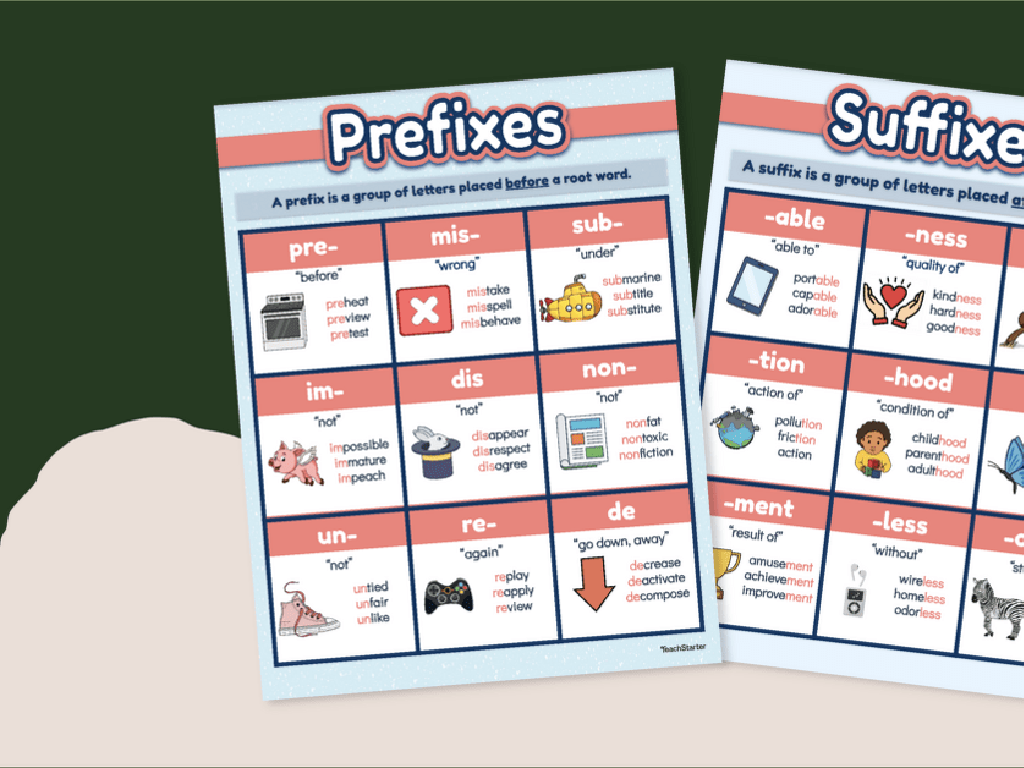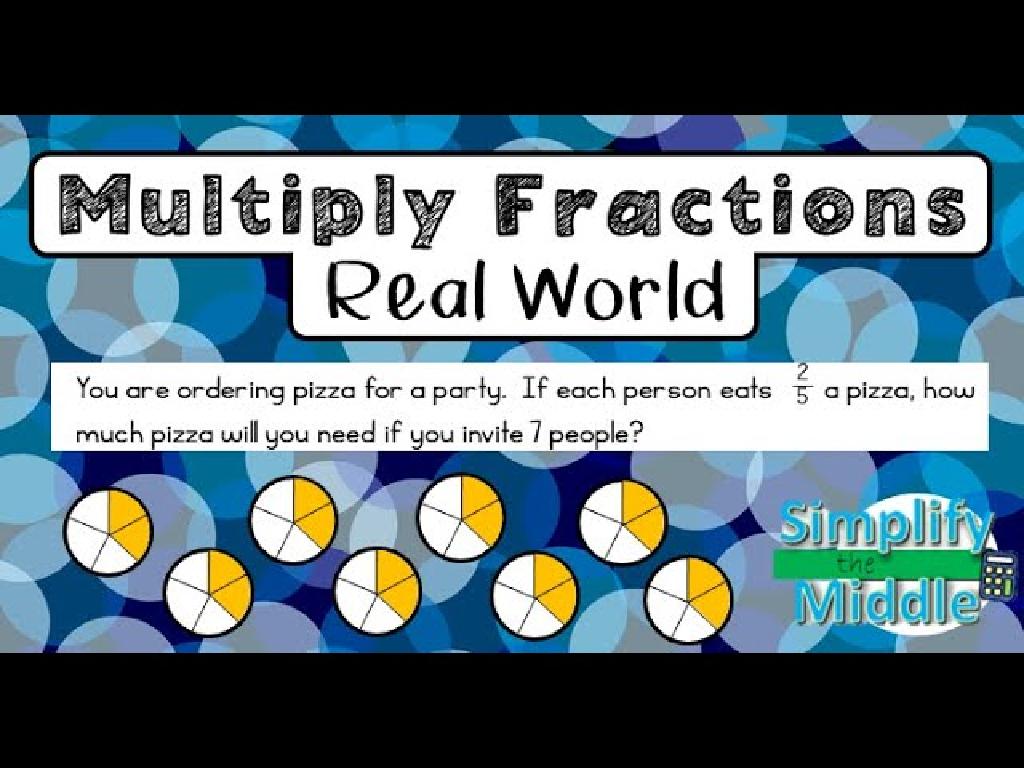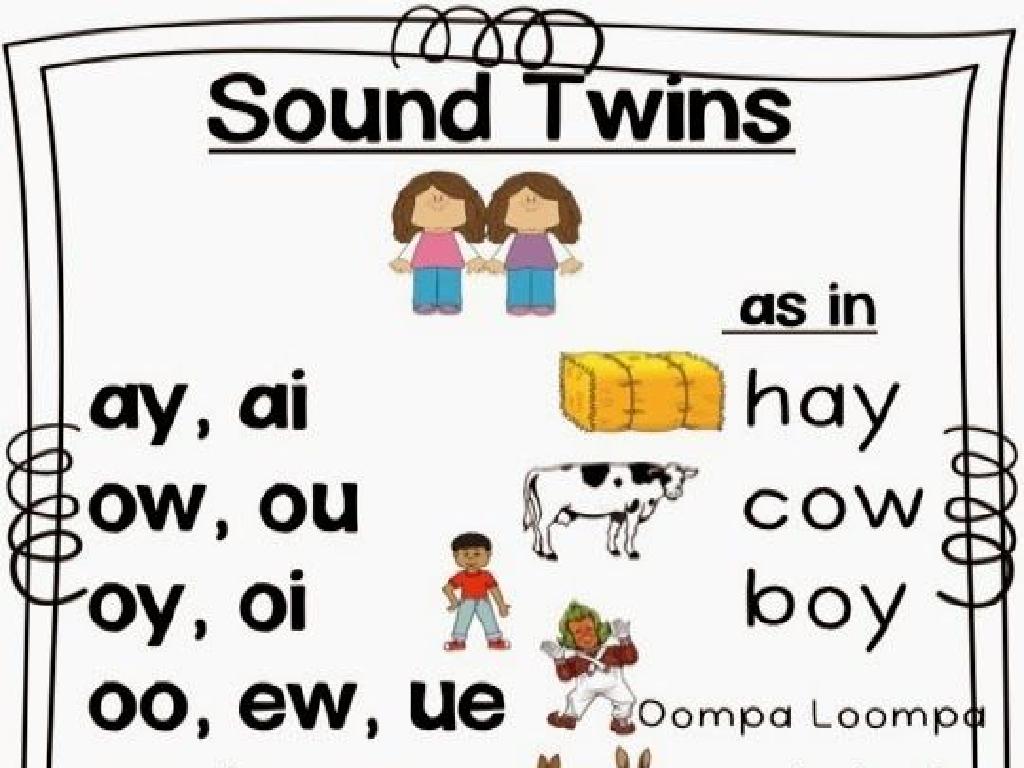Comparison Word Problems Up To 10: What Is The Smaller Amount?
Subject: Math
Grade: First grade
Topic: Comparison Word Problems Up To 10
Please LOG IN to download the presentation. Access is available to registered users only.
View More Content
Math Adventures: Becoming Math Detectives!
– Become a Math Detective today
– Compare numbers up to 10
– Which number is bigger, 3 or 7?
– Learn ‘more’ and ‘less’
– ‘More’ means a bigger amount, ‘less’ means a smaller amount
– Fun examples to understand
– If you have 5 candies and your friend has 8, who has less?
|
In this engaging lesson, students will take on the role of Math Detectives to explore the concept of comparison. They will learn to identify which of two numbers is smaller when comparing numbers up to 10. Use real-life scenarios such as comparing amounts of candies or toys to make the concept relatable. Encourage students to use the terms ‘more’ and ‘less’ to describe their comparisons. Provide plenty of examples and use visual aids like number lines or counters to help them visualize the differences between numbers. This foundational skill will set the stage for understanding more complex math concepts in the future.
Understanding ‘Smaller’ in Math
– ‘Smaller’ finds the littlest amount
– Smaller means less than others
– Let’s explore examples
– If Tom has 3 apples and Jerry has 5, who has a smaller amount?
– Practice with class activities
– We’ll use toys and counters to see who has fewer items
|
This slide introduces the concept of ‘smaller’ to first graders within the context of comparison word problems. Begin by explaining that ‘smaller’ is used to compare two amounts and identify which one is less. Use tangible examples, such as comparing groups of apples or toys, to illustrate the concept. Encourage the students to participate by asking questions like ‘Who has fewer candies, Sam or Lily?’ After explaining, engage the students with hands-on activities where they can use physical objects to compare quantities. This will help solidify their understanding of the concept of ‘smaller.’ The goal is for students to be able to recognize and use the term ‘smaller’ when comparing numbers up to 10.
Comparing Apples to Apples
– Visualize two apple baskets
– Count apples in Basket 1
– Basket 1 has 3 apples
– Count apples in Basket 2
– Basket 2 has 5 apples
– Determine the smaller amount
– Which number is less, 3 or 5?
|
This slide introduces students to comparison word problems using a relatable concept of counting apples in baskets. Start by asking students to imagine or draw two baskets with apples. Guide them to count the apples in the first basket, which has 3 apples, and then in the second basket, which has 5 apples. The key question for the students to consider is which basket has a smaller amount of apples. Encourage them to think about the numbers and decide which is smaller. This exercise helps build foundational skills in understanding comparison and quantity in word problems. For the activity, students can use real apples or counters to represent the apples in baskets and visually compare the quantities.
Using Numbers to Compare: Finding the Smaller Amount
– Numbers help us compare sizes
– Numbers near 1 are smaller
– On a number line, the closer to 1, the smaller the number
– Practice with a number line
– We’ll use a number line to see which numbers are smaller
– Find the smaller number
|
This slide introduces the concept of comparison using numbers for first graders. It’s important to explain that numbers are not just for counting; they can also show size and order. Use a number line as a visual aid to help students understand that the smaller numbers are closer to 1. During the practice, guide the students to identify which of two numbers is smaller by looking at their position on the number line. Encourage them to articulate their thought process and reasoning. This will help solidify their understanding of numerical order and prepare them for solving comparison word problems.
Word Problem Time: Comparing Quantities
– Tom’s and Sally’s toy cars
– Tom has 4 cars, Sally has 7 cars
– Who has fewer toy cars?
– Is 4 less than 7? Yes, so Tom has fewer cars
– Counting Tom’s toy cars
– Counting Sally’s toy cars
|
This slide introduces a simple comparison word problem to help students understand the concept of comparing quantities to identify the smaller amount. Start by reading the problem aloud and then guide the students to visualize Tom’s 4 toy cars and Sally’s 7 toy cars. Ask the class to count together the number of cars each child has. Then, facilitate a discussion to help them determine that 4 is less than 7, which means Tom has a smaller amount of toy cars. Encourage the students to explain their reasoning and ensure they understand the comparison before moving on to similar problems. This exercise will help build their foundational skills in understanding and solving comparison word problems.
Math Detectives: Find the Smaller Number
– Become a Math Detective
– Receive a worksheet with problems
– Circle the smaller number
For example, in 3 apples vs 5 apples, circle 3 because it’s less.
– Share your answers with the class
|
This class activity transforms students into Math Detectives, where they practice identifying the smaller number in comparison word problems. Distribute worksheets with various number problems, ensuring they include pairs of numbers up to 10. Instruct students to carefully read each problem and circle the number that is smaller. This activity helps reinforce their understanding of comparison and quantity. After completing the worksheet, encourage students to share their answers and explain their reasoning to the class. Possible variations of the activity could include using objects for hands-on comparison, pairing students to solve problems together, or creating a game where they ‘investigate’ and find items in the classroom in smaller quantities.
Great Job, Math Detectives!
– Congratulations on learning
– Finding the smaller amount
– Comparing numbers up to 10 to see which is less
– Practice is key to mastery
– The more you practice, the better you’ll get!
– Keep exploring numbers!
|
This slide is meant to congratulate the students on their hard work and understanding of comparison word problems. It’s important to reinforce the concept that practice is essential to becoming proficient in math. Encourage the students to continue practicing at home with fun activities like using toys to compare quantities or playing number games. Remind them that being a ‘Math Detective’ is about exploring and discovering new things in the world of numbers. Celebrate their achievements and encourage a positive attitude towards future math challenges.






